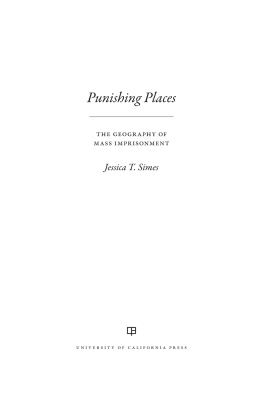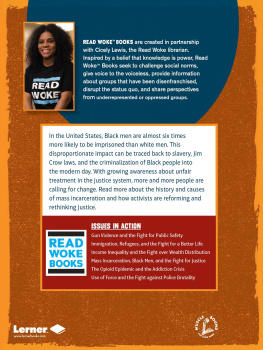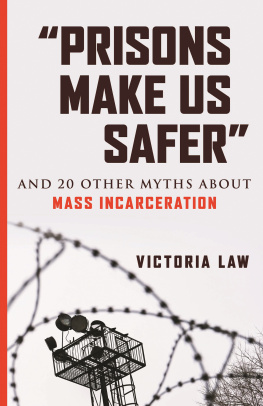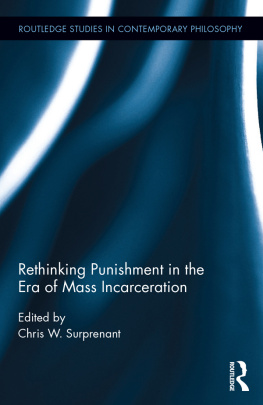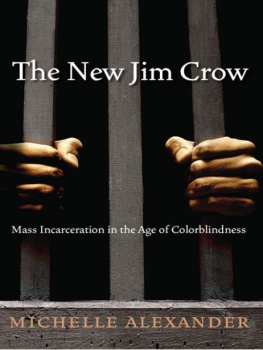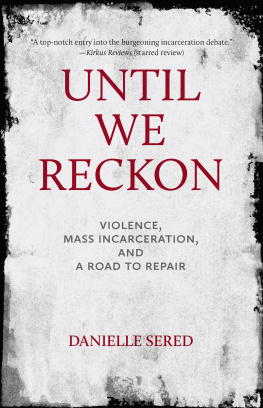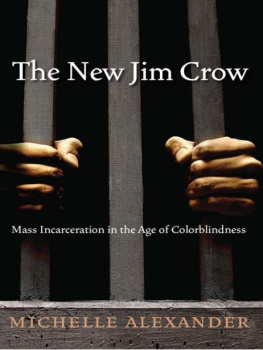Punishing Places
Punishing Places
THE GEOGRAPHY OF MASS IMPRISONMENT
Jessica T. Simes

UNIVERSITY OF CALIFORNIA PRESS
University of California Press
Oakland, California
2021 by Jessica T. Simes
Library of Congress Cataloging-in-Publication Data
Names: Simes, Jessica T, 1987- author.
Title: Punishing places : the geography of mass imprisonment / Jessica T. Simes.
Description: Oakland, California : University of California Press, [2021] | Includes bibliographical references and index.
Identifiers: LCCN 2021014013 (print) | LCCN 2021014014 (ebook) | ISBN 9780520380325 (cloth) | ISBN 9780520380332 (paperback) | ISBN 9780520380349 (epub)
Subjects: LCSH: ImprisonmentSocial aspectsUnited States. | PrisonsSocial aspectsUnited States. | SegregationUnited States.
Classification: LCC HV9471 .S574 2021 (print) | LCC HV9471 (ebook) | DDC 365/.973dc23
LC record available at https://lccn.loc.gov/2021014013
LC ebook record available at https://lccn.loc.gov/2021014014
Manufactured in the United States of America
30 29 28 27 26 25 24 23 22 21
10 9 8 7 6 5 4 3 2 1
Contents
Illustrations
FIGURES
I.1.
I.2.
I.3.
2.1.
2.2.
3.1.
3.2.
3.3.
3.4.
3.6.
3.7.
3.8.
5.1.
5.2.
5.3.
5.4.
5.5.
5.6.
5.7.
6.1.
6.2.
6.3.
MAPS
2.1.
5.2.
5.3.
5.4.
5.5.
6.1.
TABLES
2.1.
3.1.
5.1.
5.2.
6.1.
6.2.
6.3.
A.1.
Preface
This book reports findings from an eight-year project investigating the consequences of mass incarceration for neighborhoods and communities in the United States. A vast research literature has revealed the large demographic trends in imprisonment, usually at the state or national level, and reported on the long-term, even generational consequences of mass incarceration for individuals and their families. Drawing on insights from community and urban sociology, my research builds on this foundation to understand how mass incarceration became part of the deep and durable forms of disadvantage concentrated in Americas poorest and most vulnerable neighborhoods. Several experiences, both within and beyond the academy, led me to write this book about the spatial context of mass incarceration.
The 2014 National Academy of Sciences report on the causes and consequences of mass incarceration called for more researchlike that in the following pageson the community-level effects of mass incarceration: Much of the research on the effects of incarceration has focused on individual-level outcomes for formerly incarcerated individuals and sometimes their families. Yet because of the extreme social concentration of incarceration, the most important effects may be systemic, for groups and communities. I have responded to the call both by drawing attention to community-level conditions of incarceration at the neighborhood and county levels and by presenting new measures that capture the social and political costs of mass incarceration.
All these case studies (and more) have demonstrated the extreme spatial inequities in incarceration within urban cities and metro areas. I hope to build on these insights to explore the community-level effects and conditions of mass incarceration beyond large cities.
I knew that in order to understand the effects of mass incarceration on communities, I needed to be able to identify the neighborhoods of incarcerated people and map those data along with other important community-level conditions. When I was a first-year graduate student, I applied for an unpaid internship at the Massachusetts Department of Correction. My initial work in the department would inspire this project with a surprise (to me, at least): the majority of people coming to prison were not from the urban core, but from small cities outside of Boston. Later in graduate school, while working on my dissertation, I helped to start a prisoner reentry nonprofit in Lowell, Massachusetts, a small city north of Boston. In this organization, I worked with service providers, social workers, and residents of the city of Lowell and surrounding areas; many of our conversations inform the arguments and analyses in these pages. From them, I learned the importance of remaining close to the populations and places sociology studies, especially if we hope to identify emerging and understudied patterns.
, I report on interviews I had with many social service providers about the conditions of their cities and what must be done to end poverty and the cycle of incarceration, but these places are much more than the poverty rates, policy neglect, policing, and incarceration that I write about. They are communities like any other, full of complexities and humanity, and each cannot be fully captured by my characterization, particularly as I choose to share what challenges they face.
As I was finishing up my first draft of this manuscript in late May 2020, police officers brutally murdered George Floyd and Breonna Taylor, bringing out millions to protest police violence. As communities raised signs affirming Black Lives and chants of I Cant Breathe echoed throughout the country, a space opened up for robust debates over what justice means under current conditions of mass incarceration. In this watershed moment for social movements and racial justice, proposals for abolition and reparations became commonly proposed solutions to police violence and mass incarceration. In my initial draft, I wrote that while abolition and reparative justice remain marginalized from mainstream policy reform discussions, my findings suggested them as necessary next steps to resolve the injustices of mass incarceration. I cautioned that even progressive-minded scholars and policy makers view reparative justice and abolition as radical and untenable approaches to justice and equity. However, in one summer of protest and reckoning, that fundamentally changed.
What began as a project uncovering new and understudied trends in imprisonment patterns led me back to one of the oldest facts of American society. Underlying incarceration ratesthe highest and most concentrated being among Black and Latino peopleis the legacy of racial residential segregation. In the context of ever-widening spatial patterns in recent years, incarceration rates still concentrate in Black communities in ways unseen in any White community. This finding leads me to ask: What must the state do to repair the injustices of policy choices affecting the most marginalized people in society? It is my hope that this book honors the lives and lifetimes lost to mass imprisonment and supports a continued struggle toward community-based justice.
Acknowledgments
I wish to offer my sincere gratitude to Rhiana Kohl, Eva Yutkins-Kennedy, Nicholas Cannata, and Lisa Sampson from the Massachusetts Department of Correction, as well as the Massachusetts state prison systems research division, which supplied the majority of the data used for this books analysis. Because of their work and assistance, today I am able to tell a mostly untold story of American punishment: the importance of small cities in the persistence of mass incarceration and social inequality.
I have had the good fortune to have superb advisers and mentors who have greatly improved this project. The work presented in this book is the result of many conversations and discussions with my dissertation committee: Bruce Western, Rob Sampson, Matt Desmond, and the late Devah Pager. Their combined expertise, generosity, and support brought energy and rigor to this project. I am especially grateful to Bruce Western for his unparalleled support, his many critical reads, and the resulting evolution of my scholarship.
Next page
